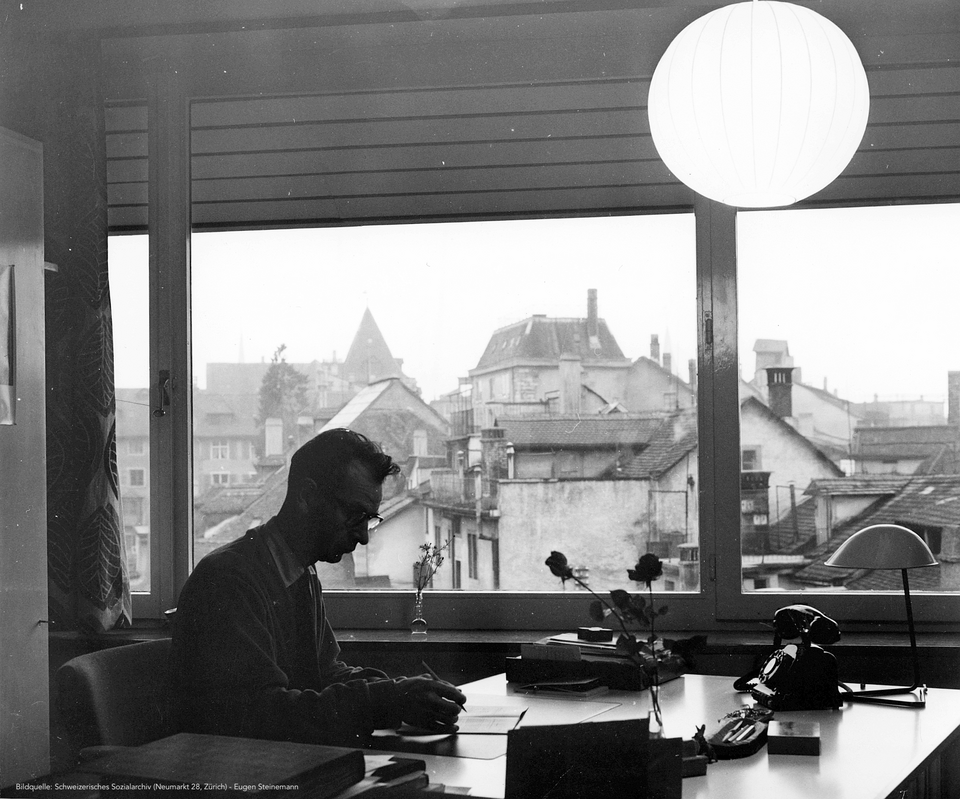
Contact
Subaltern mimesis
Recursive processes in Literature, Editing and Other Media
The project "Subaltern Mimesis" is dedicated to collaborative forms of writing. By examining the collaboration between authors and editors on the one hand, and between authors and their writing software on the other, we aim to identify the share of 'invisible' actors within the writing process. On the one hand, we are interested in analyzing those literary scenes and motifs that provide information about the creative process and the actors involved in it. On the other hand, we ask how the relation between author and editor/writing software shapes the literary writing process and leads to effects that are informative in terms of media and literary studies.A first focus of the project is on modernist literature, namely on the author-editor constellations Robert Walser and Christian Morgenstern as well as Rainer Maria Rilke and F.A. Hünich. A second focus is on the informatic actors of the present, which - such as spell checkers (AutoCorrect) or the thesaurus function in writing software like OpenOffice etc. - shape literary production in specific ways. Using an expanded notion of "assistance systems," the interplay between human and machine in the act of writing is examined in particular, with the aim of formulating a figure of thought of mimetic action that readjusts the relationship between model and copy in the literary creative process. This figure of subaltern mimesis is drawn in particular from the concept of recursion.
Algorithmic Mimesis: Sequential and Connectionist Paradigms of Generative Writing
(Hannes Bajohr)
This research project is dedicated to the history and systematics of digital literature. This is understood here in a narrower sense as that primarily experimental genre that produces its texts through formalized algorithms using computers. The heuristics here are consciously guided by the very latest technological development - namely, the fact that since about 2012 a new paradigm has entered text-generative practice that stands in the greatest possible contrast to its predecessor techniques: artificial neural networks (KKNs). While previous digital literature was primarily characterized by linear, deterministic, step-by-step algorithms, KNNs stand in radical contrast to this in their parallel structure, their statistical rather than deterministic, as well as "quasi-analog" (Andreas Sudmann) mode of operation.
The research project wants to take this distinction between sequential and connectionist paradigms of generative text production as a basis. On the one hand, it can be used to describe the media-theoretical and text-material implications that are generally determinant for KNNs. On the other hand, this caesura can also be traced within the field of digital literature and can be used to historicize and systematize paradigms of digital literature and the structure of human-machine interactions in it. Moreover, a difference in the underlying poetics can be inferred from the technical difference.
The working hypothesis is that sequential and connectionist paradigms are based on different conceptions of mimesis, which, with Hans Blumenberg, can be called construction on the one hand and imitatio naturae on the other: A transition from the pattern "humans imitate human texts by machines" to the pattern "machines imitate human texts by machines under human measures" can be observed. At the same time, however, this internal differentiation of digital literature is cancelled out externally, in relation to conventional writing, in a common algorithmic mimesis . This is characterized above all by the gesture of distancing that generative literature has emphasized since its beginnings and that consists in the mere formulation of rule steps whose execution is left to the compiler or interpreter - authors of generative literature do not write, but let write. And this continues to be the case with KNNs, albeit under the conditions of the aforementioned shift. Algorithmic mimesis thus describes difference and continuity in the field of digital generative literature.
